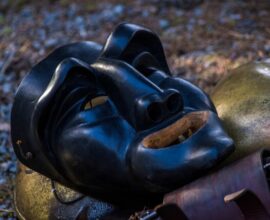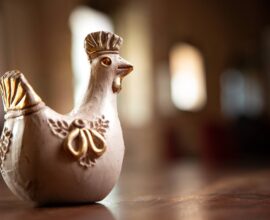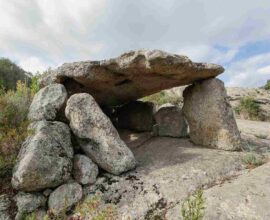Biodiversity, the virtuous example of Sardinia
What is biodiversity?
Biological diversity, or biodiversity, is the result of about 4 billion years of evolution. Furthermore, it is the cornerstone of sustainable development.
The 1987 Brundtland report described it as the process that meet the “needs of the present without compromising the ability of future generations to meet their owns”. It “implies a progressive transformation of economy and society”.
The term biodiversity derives from the Greek bios (life) and the Latin diversitas (difference, diversity). The ecologist Raymond Dasmann used it for the first time in 1968. A few years later it also appeared in the book “Conservation Biology” by the biologist Thomas Lovejoy. But it was only in 1988 that became common. This is due to a collection of essays, entitled “Biodiversity” by the American biologist and evolutionist Edward Wilson.
The internationally recognized definition of biodiversity is that of the Convention on Biological Diversity (CBD), signed in Rio de Janeiro on the 5th of June 1992 and ratified, to date, by 196 countries. The article n.2 of the treaty describes it as “the variability among living organisms from all sources including, inter alia, terrestrial, marine and other aquatic ecosystems and the ecological complexes of which they are part; this includes diversity within species, between species and of ecosystems “.
In other words, biodiversity is the variety of living organisms in their different forms and their respective ecosystems. And it is the basis of the evolution and maintenance of life on Earth.
It is possible to distinguish three different levels of biological diversity which correspond to as many hierarchical and interdependent levels of nature:
- Genetic diversity, refers to the variety of the genetic heritage within the same species;
- Species diversity, includes the richness of species (number of species present in an area), the abundance of a species (its dominance in a habitat) and taxonomic diversity (evolutionary relationship between different species);
- Diversity of ecosystems, indicates the variety of natural environments and ecosystems in which different organisms live and develop, making life and the evolution of species on Earth possible.
But biodiversity is not a fixed and stable element. In fact, in a given environment, it can increase or decrease due to natural and/or anthropogenic factors.
Biological diversity: why is it important to protect it?
Biodiversity is important for maintaining the stability of nature. Moreover, it plays a fundamental role in protecting people’s health and is essential for the economy. Consider that the World Economic Forum says that nearly half of the global GDP (around € 40 trillion) depends on the natural environment and its resources.
According to WWF, biological diversity is a sort of ‘web of life’, which importance derives from providing those ecosystem services essential to humans, animals and plants.
There are four groups of ecosystem services:
- Supply services, such as food, drinking water, construction materials and the active ingredients of medicine;
- Support services, including oxygen production, soil formation, photosynthesis, nutrient cycle and water cycle;
- Regulation services, that is the regulation of climate and tides, water purification, pollinating activity of bees and control of infestations;
- Cultural services, which include the aesthetic, recreational and spiritual needs of humans. For example, the study on medicinal plants.
Nowadays, biodiversity is seriously endangered by multiple factors. For example, the climate change, the pollution, the desertification, the soil erosion, the intensive agriculture, the introduction of alien species. But also poaching and excessive fishing and hunting that cause habitat destruction, degradation and fragmentation.
As highlighted by the ISPRA foundation, the loss of biological diversity contributes to food and energy insecurity, decreases the availability and quality of water resources, increases the vulnerability of ecosystems to natural disasters. In addition, it has a negative impact on society and causes the impoverishment of cultural traditions.
Sardinia as a laboratory of biodiversity. The Forte Village Resort project
Sardinia is a land of great biodiversity, with heterogeneous habitats and a rich heritage of flora and fauna. Thanks to the favorable Mediterranean climate, the island is a real paradise on Earth with a flourishing vegetation. There are species, called mesophytes, which date back to more than 60 million years ago, and endemic ones of valuable naturalistic interest. As for the fauna, in Sardinia are 370 animal species, including 41 species of mammals, 18 of reptiles, 8 of amphibians and about 300 of birds.
The protection, conservation and enhancement of the island’s biological diversity are the basis of the Sardinia Biodiversity project. This is both a web portal and the reference point of the agro-biodiversity of the Autonomous Region of Sardinia. The site is a valuable tool that allows a more careful management of the Regional Directory of Agricultural Biodiversity, of the List of Farmers and Guardian Breeders (AAC), of the sections of the Germplasm Bank, the Conservation Network and the Protection Communities for the animal and plant genetic resources of the island.
Forte Village, the award-winning resort surrounded by the splendid Sardinian sea, focuses on protecting the environment and the biodiversity. This is why it is a model of sustainable accommodation, capable of safeguarding the resources of the territory and of communicating with the people who live here.
Within Forte Village are 3000 species of plants, while 5000 are the new ones grown every year. In addition, the resort’s team of 80 gardeners works closely with local authorities on resort-funded conservation projects. The aim is to protect one of the most sensitive areas of the Sardinian coast.
Do you want to experience a dream vacation in a true paradise in the name of sustainability? Discover the Forte Village Resort in Sardinia






